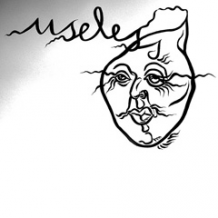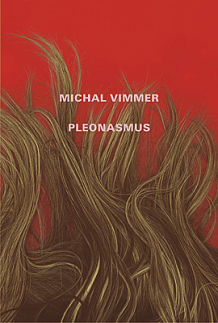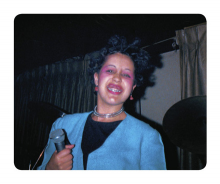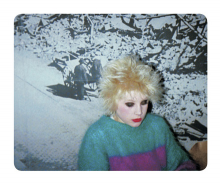| Revista Umělec 2010/2 >> The triumphal march of the vuvuzela: can we ban elephants from trumpeting? | Lista de todas las ediciones | ||||||||||||
|
|||||||||||||
The triumphal march of the vuvuzela: can we ban elephants from trumpeting?Revista Umělec 2010/201.02.2010 Jiří M. Špičák | sound | en cs de ru |
|||||||||||||
|
The big hit of this year’s football World Cup in South Africa, the plastic vuvuzela—used in general by South African fans to trumpet a monotone symphony of football fandom—has became a popular target of colorful comparisons. This 65-centimeter long “horrendous whistle,” as Czech midfielder Tomáš Rosický has called it, is earning labels left and right—mostly of the pejorative type. The trumpet of the last judgment has been said to recall a stampeding herd of confused elephants, a swarm of angry wasps, or a goat desperately bleating at the slaughter.
But this piece of plastic is more than just an instrument used by African fans to spur on their team of choice—it also reflects the extent to which the Western world has become used to its own noises but is incapable of accepting foreign noises. It forces us to think about the form taken by contemporary music, and it is a sociological tool that can help decipher the relationship between player and fan. Above all however, it is a phenomenon that extends far beyond the limits of the largest sporting event in the world. At the beginning of the story of this plastic trumpet that, over the course of just a few weeks, managed to rule the world, is the African kudu antelope. It is from the horns of this animal that Africans first created the kudu horn, which was originally used as a kind of community radio; villagers called meetings by blowing into the antelope horn. The horn’s renaissance came in the 1960s, specifically in 1965 when, as the story goes, the first modern vuvuzela (at the time made of aluminum) was manufactured by South African football fan Freddie Maake using part of his bicycle. Over time the trumpet became an organic part of South African football culture and South Africans spent years blowing out their lungs to the clear indifference of the rest of the world. The real carpet-bomb effect came with this year’s World Cup, which for the first time in its history was held in Africa. The political decision to hold the most-watched sporting event in the world in the poorest continent unleashed a wave that no one had expected. Riding its crest were not the world’s greatest players, but a plastic trumpet whose droning noise has torn down walls. Even before the World Cup kicked off, unhappy fans and players had stirred up a debate without precedence: shall we ban the South African fans from using their vuvuzelas? Or should we force spoiled players and fans to listen to the rowdy Africans’ animalistic roar? Although at first glance absurd (“can we forbid people from emitting a certain sound?”), it was a serious proposal. It was claimed that the vuvuzela prevented players from effectively communicating on the field, that it caused irreversible damage to hearing (the vuvuzela’s 130 decibels are the same as a jet plane at takeoff), and that the unending drone was ruining millions of television viewers’ enjoyment of something they had waited four years to see. However, these apparently rational arguments concealed a carefully hidden attempt to ‘protect’ our European football before an invasion from the wilds of Africa. Western civilization—which had imported the most popular team sport in the world onto the black continent—was suddenly amazed at what the African heathens had done with this originally rational sport. There appeared attempts at instructing Africans the ‘proper’ way to cheer, all too reminiscent of long-term attempts at ‘Europeanizing’ the Africans. In the end, FIFA’ s president Sepp Blatter permitted the trumpets, defending his decision with statements regarding the need to preserve the games’ authentic atmosphere. But the seeds had already been sown for a conflict between the subdued European fans and the unchained Africans. The mass chorus of African vuvuzelas helped to bring to the surface Western man’s relationship to noise in general. Noise surrounds us to such an extent and is such a part of our lives that we no longer notice it. The uniform drone of large cities is such a natural backdrop to our lives that it actually puts us at our ease and it would seem that we have nurtured a natural antidote to noise, but only to ‘our’ noise. As soon as our world is invaded by alien sounds from other worlds, general panic ensues. The opponents of the vuvuzela attempted to hide this panic behind rational arguments by coming up with dozens of ways of ‘proving’ that the vuvuzela way of rooting for one’s team is ridiculous and undignified. The most common argument (and a frequent target of online jokes) was that the vuvuzela is monotonous and that trumpeters do not respond at all to events on the field. If anything, however, this argument illustrates not the ‘stupidity’ of African fans but the fans’ divergent relationship to the players. European fans only start to loudly spur on their team when there is a goal in the making. For the rest of the game, they watch the play in an apparently disconnected and cold manner. This approach also reflects the extent to which modern society has been ‘spoiled’—it is saturated with stimuli and a mere football match is just not as fascinating as it once was. For African fans, on the other hand, participation in the great theater of football is a key part of the experience. They want to be a part of the process that gives the match its magic and to this end they have chosen the loudest and boldest of tools. In addition to the vuvuzela, African football also features wild costumes and ritual dances, and it wasn’t that long ago that games would be preceded by rooster sacrifices as an offering to the football gods. Each African football team features not only a coach, but also a shaman. No wonder that civilized Europe is shocked and amazed at what has happened to its ‘child’—football. The idea that a bit of this incomprehensible African culture might make its way to Europe (and such an expansion seems to be in the making, with vuvuzelas being sold by the thousands in England and twenty percent of Liverpool’s fans supposedly in favor of hearing the trumpets at their home games) is causing genuine dread in the minds of local football officials. Germany’s Borussia Dortmund banned the use of vuvuzelas at its stadium long before the start of the season, and they have been joined by other teams from across the continent. The arguments against the vuvuzela consistently focus on the desire to preserve a European atmosphere at the stadiums and not to allow even a tiny fragment of African culture into stands (how politically incorrect in this era of omnipresent self-censorship). Instead of attempting to preserve the European way of spurring on one’s team through song and chant, it would seem that we are witnessing mainly a defensive reaction and an attempt at shutting out an alien sound. Officials are not concerned about the vuvuzela’s noise levels, but that it is breaking down commonly held ideas of what ‘proper’ noise should sound like. This whole conflict has embodied the vuvuzela with the air of an instrument that has once again managed to imbue sound with its long lost potential; the ability to arouse and fire up discussion. It is almost as if humankind has developed a shield that allows us to ignore ‘mere’ sounds, yet in a world without silence, the tsunami of reactions unleashed by the vuvuzela has shown us that people’s ears are still sensitive. In addition to selfish and covertly racist remarks (it is worth noting that many such remarks have come from Czech commentators and experts at television studios), the internet is overflowing with people for whom the vuvuzela is above all a postmodern artifact that should be placed within new contexts. At practically the same time as the opening whistle for the tournament’s first match between the hosts and Mexico, internet discussion forums were filled with dozens of memes of varying quality. For the most part the jokes—which almost exclusively played with the vuvuzela’s annoying nature—are merely an exasperated acknowledgement of the need to somehow endure the instrument’s annoying drone. But more original ideas have appeared as well. For instance, ‘sheet music’ for properly playing the vuvuzela (the musical notation contains only one note) or a cover version of John Cage’s legendary 4’33”—adapted for the solo vuvuzela, of course. And the person on the cover of Burzum’s cult black metal album Filosofem is suddenly not blowing a Norwegian horn, but a plastic trumpet. And of course the sound of the vuvuzela has made its way onto social networks – YouTube adorned all videos with a special football icon that emitted the sound of a vuvuzela, and the word ‘vuvuzela’ was, for a time, one of the most frequent words on Twitter. Responses along the lines of the ancient principle of, “if you can’t beat them, then let’s at least make fun of them,” are a natural and expected approach to dealing with the sound of the vuvuzela. However, the internet radio station vuvuzela.fm (an unending loop of a thirty-second recording of a vuvuzela) daringly touches upon other aspects of this cult trumpet. When listened to correctly, the monotone sound has the ambition of sounding the same as the music of artists who work with the so-called drone effect, i.e., the sustained emission of a monophonic wall of sound. The Facebook group “Let’s ban football at vuvuzela concerts” is more a spoof than anything else, but the fact remains that, with the proper point of view (and point of hearing), the vuvuzela could easily provide a musical experience as well. If we actively listen to the chaotic, disorganized sounds of the vuvuzela; names such as La Monte Young or Phill Niblock come to mind, comparisons that are far from as perverse as they may seem. For those constantly seeking out new musical forms, the vuvuzela is like manna from heaven. It is not as prefabricated as commercially successful world music, but it nevertheless represents an authentic import from exotic Africa. At the same time, it is an absolutely natural and organic instrument, and just about anyone can play the vuvuzela. In fact, there have been matches at which several tens of thousands of vuvuzelas have been played at once. Seen through a musical lens, each football match is a unique acoustic experience, offering the possibility of hearing the vuvuzela in its natural environment. In other words, there is no need to tear its sound out of context and to create artificial listening conditions. Unfortunately, you will have to attend the football match in person because, after several games, television stations succumbed to the pressure of the majority of the football-watching public and toned down the microphones at the stadiums. It will be interesting to observe how the sound of the vuvuzela will waft across the world and whether this monophonic trumpeting will reach a climax during the coming season; this at least will show us the extent to which people have let themselves be enchanted by the sound of the plastic trumpet or whether they will resist the urge to bring an original African trumpet to a match in the Czech Republic, Germany or England. But it is already clear that the sound of the South African vuvuzela is one of only a few sounds that have managed to become a part of the collective consciousness of a great part of humankind. At least for a while.
01.02.2010
Artículos recomendados
|
|||||||||||||
|
04.02.2020 10:17
Letošní 50. ročník Art Basel přilákal celkem 93 000 návštěvníků a sběratelů z 80 zemí světa. 290 prémiových galerií představilo umělecká díla od počátku 20. století až po současnost. Hlavní sektor přehlídky, tradičně v prvním patře výstavního prostoru, představil 232 předních galerií z celého světa nabízející umění nejvyšší kvality. Veletrh ukázal vzestupný trend prodeje prostřednictvím galerií jak soukromým sbírkám, tak i institucím. Kromě hlavního veletrhu stály za návštěvu i ty přidružené: Volta, Liste a Photo Basel, k tomu doprovodné programy a výstavy v místních institucích, které kvalitou daleko přesahují hranice města tj. Kunsthalle Basel, Kunstmuseum, Tinguely muzeum nebo Fondation Beyeler.
|

































 We Are Rising National Gallery For You! Go to Kyjov by Krásná Lípa no.37.
We Are Rising National Gallery For You! Go to Kyjov by Krásná Lípa no.37.
Comentarios
Actualmente no hay comentariosAgregar nuevo comentario